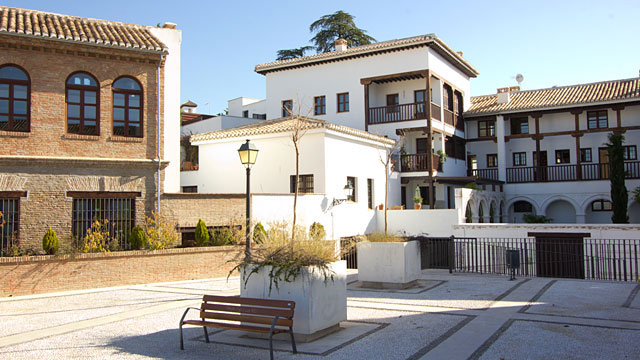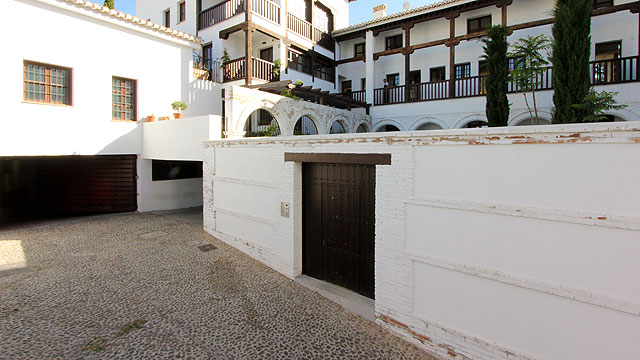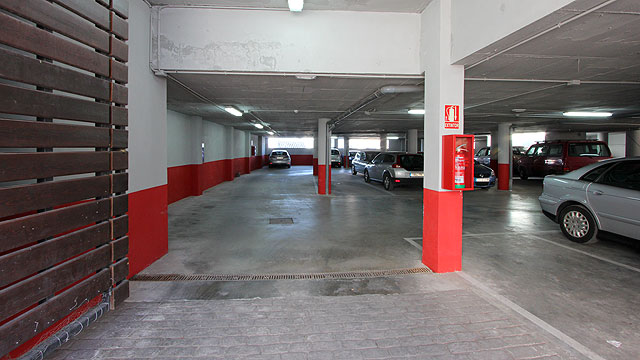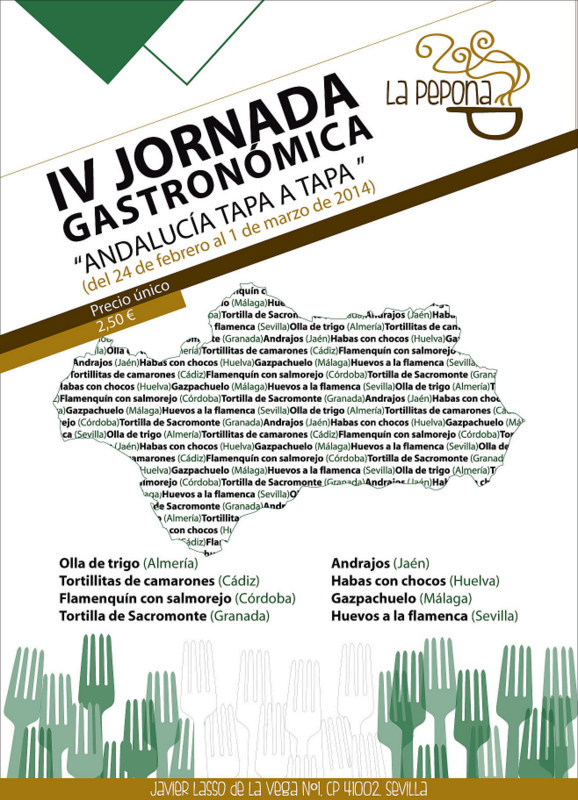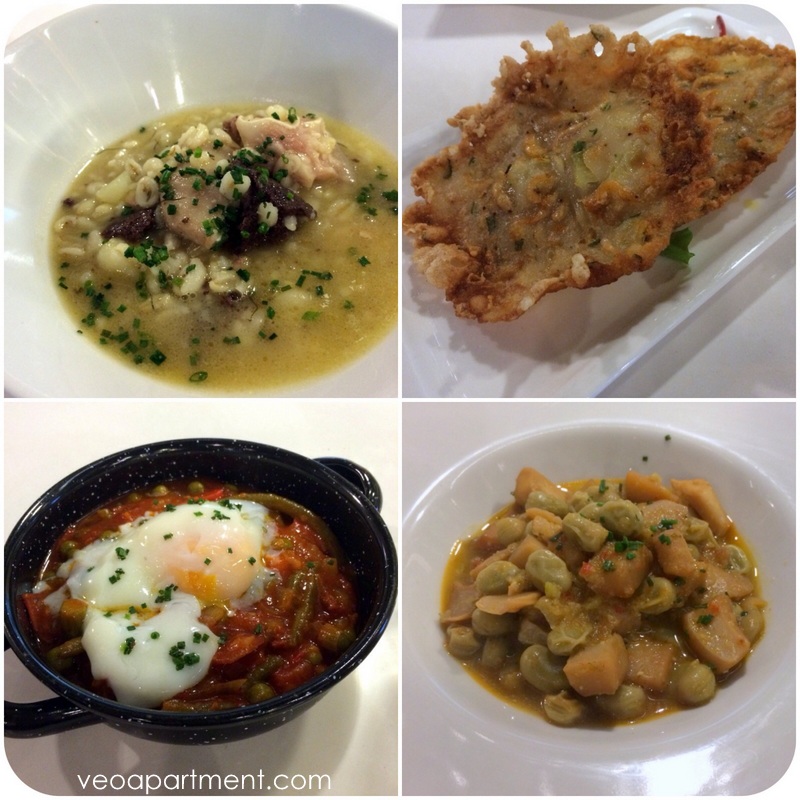Here at veoapartment blog we pride ourselves on the invaluable information and advice about visiting Spain that we give our readers and guests, as well as all those insightful historical and cultural tidbits to help you understand what you’re seeing. We were just busily patting ourselves on our collective back when it occurred to us that we haven’t actually “done” the tourist thing for a while, and we should actually remind ourselves what it’s like to be a visitor. The obvious choice was to revisit Seville’s three main monuments, which are all UNESCO Heritage Sites: the Alcázar Royal Palace, the Cathedral and Giralda Tower and the Archivos de India. Despite the daunting prospect of being out of the office for several hours* a crack team of investigative reporters (myself and a colleague) was rapidly assembled, and we set off into the sunshine.
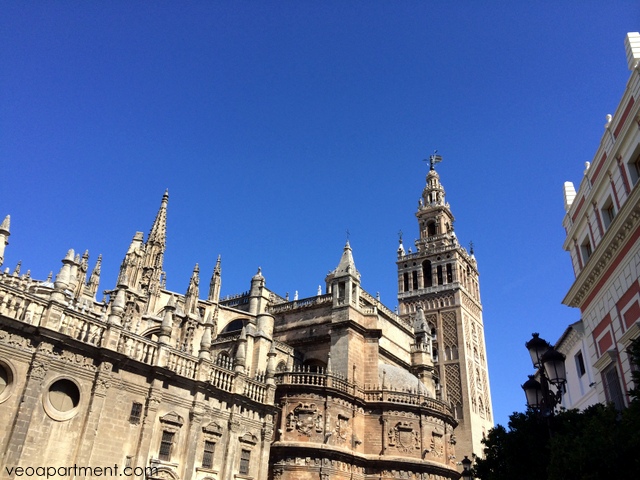 the Cathedral and Giralda tower seen from the Plaza Triunfo
the Cathedral and Giralda tower seen from the Plaza Triunfo
Tip 1. The first thing a serious tourist needs is, of course, a good breakfast. We had ours at the excellent La Azotea Santa Cruz (coffee, ham and tomato on toast, and delicious fruit smoothies) in Mateos Gago, the street going up from the Plaza Virgen de los Reyes behind the Cathedral. For a more traditional coffee and tostada try the Horno San Buenaventura on Avenida de la Constitución, across from the Cathedral.
Tip 2. There is often a long queue for tickets to the Cathedral. Avoid it by buying a combined ticket at the El Salvador church (worth having a quick look inside while you’re there too), which will allow you to by-pass the Cathedral queue.
Tip 3. The Cathedral is normally open from 11am to 5 pm (last entrance 4.30), but closes early on Mondays (3.30 pm). It’s a working Cathedral so Sunday mornings it is not open for tourist visits. In the afternoons it’s open 2.30 to 6 pm.
Fun Cathedral Facts: It’s the third largest church in the world, and the largest Gothic cathedral, as well as having the most ostentatious (sorry, biggest) gold altarpiece. The Giralda tower and the outer walls of the Patio de Naranjas (Courtyard of the Oranges) are from the Moorish period (12th century), the main body of the Cathedral is Gothic (15th century), the Royal Chapel and anything with bells in it is Renaissance (16th century), and the sections with rectangular windows are Barroque (17th century). It contains the tomb of Christopher Columbus (probably).
Fun Cathedral Things to Do: Look in the angled mirror that allows you to look down at the vault of the cathedral roof. Play Hunt the Crocodile (yes, there is one – not alive fortunately). Climb the Tower. This is actually the most fun thing. It’s a ramp, not stairs, so it’s not too arduous, and you can look out of the windows on the way up and watch the city spreading out below you. The view from the top is worth the exertion.
Tip 4. If you want to know more, get the audio guide.
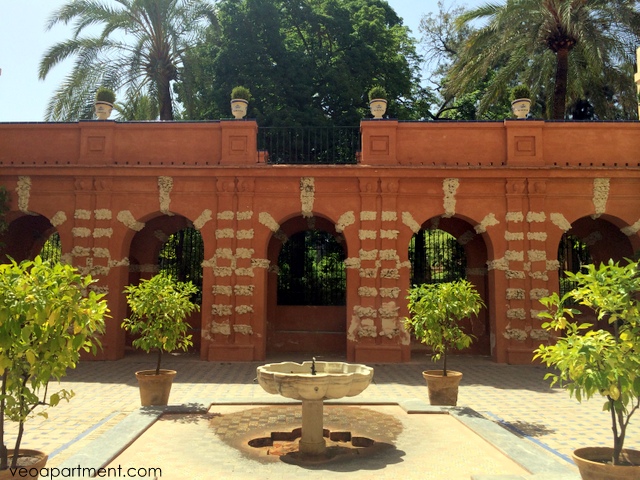 a fountain inside the Alcázar Palace gardens
a fountain inside the Alcázar Palace gardens
Tip 5. The Alcázar and the Cathedral is a lot to do in one sitting (allow 2 hours for the Alcazar and 1 for the Cathedral, but you may want longer), so either do them on successive days, or do lunch in between. We just had a cold beer, and it wasn’t really enough, but we weren’t on holiday, and you are, so don’t worry about the time. In summer do the Alcazar in the morning before it gets too hot. Opening times are 9.30 am – 5.00 pm (October – March), 9.30 am – 7.00 pm (April – September).
Fun Alcazar Facts: Originally the site of a 9th century Moorish fortress, the oldest remaining parts – the outer walls and the Yesio Patio – date to the 11th century. The main palace was built by Peter the Cruel in the 14th century in the Mudejar style, and further additions and modifications continued through the Golden Age into the 17th century. It’s the oldest Royal Palace in Europe and is still the official residence of the King of Spain in Seville. It’s shortly to be used for filming part of season 5 of “Game of Thrones”. The Baths of Doña Maria de Padilla are actually rainwater tanks, but are still one of my favourite bits.
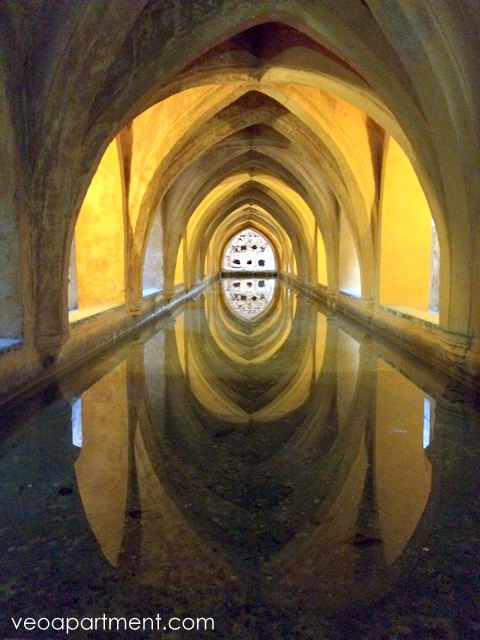 baths of Doña María de Padilla
baths of Doña María de Padilla
Fun Alcazar Things to Do: Read the English translations of the information signs (can they really not afford a professional translator)? Although the Palace is awesome, the main fun things are in the gardens. Visit the maze, the Pool of Mercury (a fish pond with an airial fountain), and the Wall of Grotesques.
Tip 6: Get a map (it’s surprisingly easy to get disoriented) and an audio guide, and remember to look up at the ceilings as well as horizontally at everything else.
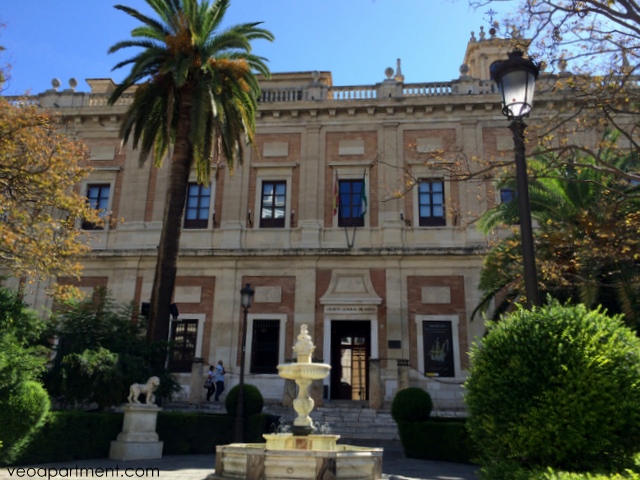 Archivos de India entrance on Avenida de la Constitución
Archivos de India entrance on Avenida de la Constitución
Our final stop was the Archivos de India, the big square building between the Cathedral and the Alcazar Palace. The document boxes are actually empty (the main archive is now across the street), but they give an idea of what the building looked like in use. You can see some of the old documents in display cabinets and there are often exhibitions, so check to see what’s on. When we were there it was hosting a gold and silver model of Columbus’s ship the Santa Maria. Admission is free. Opening times are 8.00 – 2.30 pm (Monday – Friday ).
Fun Archivos Things to Do: Watch the little film about the history of the building, including its connection to the Americas’ trade (in Spanish with English subtitles). Fascinating.
*Bear in mind this was July and the office has air-conditioning…
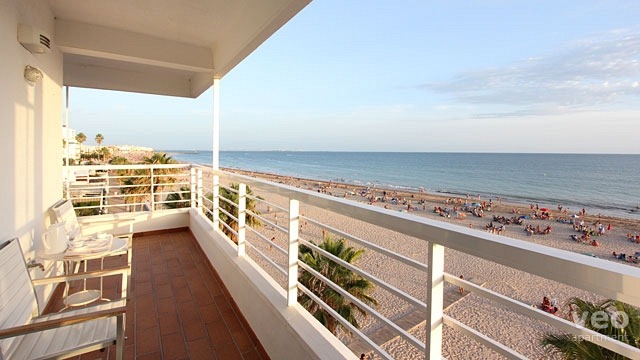
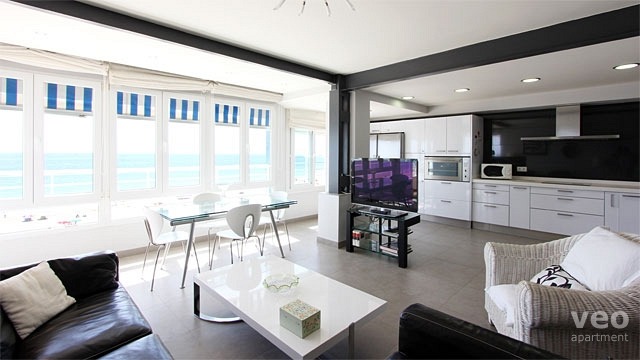 enjoy sea views from the comfort of the spacious living room
enjoy sea views from the comfort of the spacious living room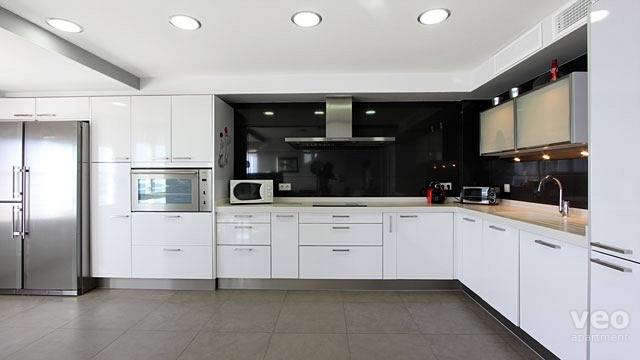 fully-equipped kitchen to prepare your market purchases
fully-equipped kitchen to prepare your market purchases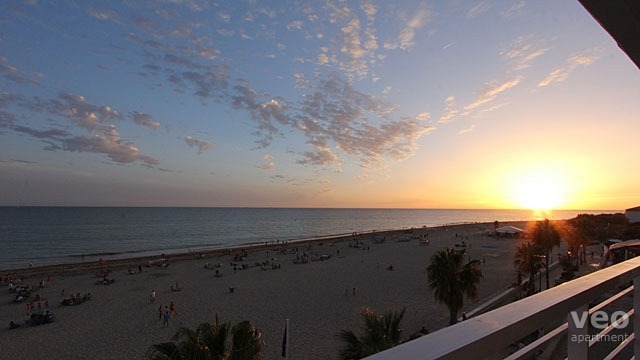
 the Cathedral and Giralda tower seen from the Plaza Triunfo
the Cathedral and Giralda tower seen from the Plaza Triunfo a fountain inside the Alcázar Palace gardens
a fountain inside the Alcázar Palace gardens baths of Doña María de Padilla
baths of Doña María de Padilla Archivos de India entrance on Avenida de la Constitución
Archivos de India entrance on Avenida de la Constitución